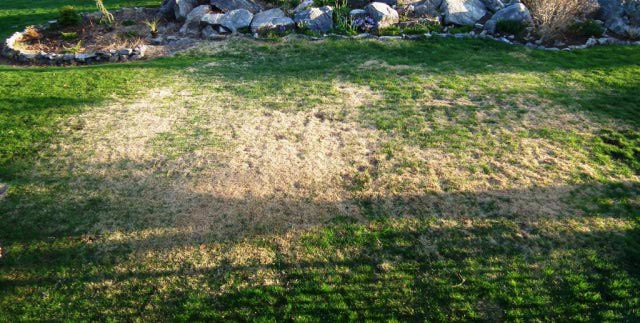Question
 Yellow grass
Yellow grass
As several other of your readers have experienced, I also have an issue with yellow grass in the Spring. I have lived in a townhouse in Central PA for about 20 years now. As far as I can recall, every Spring my lawn starts out yellow like dried out straws. My neighbors lawns do not have this problem. Gradually, it becomes green but now we are well into May. Once green, it is the most wonderful soft 慴lanket?to walk on. Everyone comments on that. But, if we get a draught period, my lawn is the first to get yellow spots. Now because it seems to have a different density than adjoining lawns, I suspect that my problem is not one of fungus, disease or insects, but simply may be due to a different grass type? It is quite unsightly (see photo), and I would like to know what I can do to fix this. Is a new lawn required or is there any other solutions?
Answer Essentially there are three categories of causes of plant failure.
1. Pests.
2. Diseases.
3. Cultural/Environmental conditions.
A soap flush will uncover an insect problem. Your assignment, should you care to accept it, will be to identify the harmful insects; and decide upon a control measure.
A disease is a bit more difficult to diagnose. You must know what grass(es) you have. Then you have to get familiar with the diseases that are associated with them. You can access images of the diseases associated with the grass, identify the disease you have and then find out a control measure that you can handle.
If your problem is neither a pest nor disease, then there is something in the culture of your lawn. Irrigation, fertilization, weed control chemicals - especially weed and feed combinations. Familiarize yourself with the various deficiency symptoms. Iron might be a worthwhile target from the symptoms you describe.
Do not overlook things like a spill. Chlorinated pool discharge is a common culprit.
Even if you decide to re-sod, you should
find out the cause of death and take corrective action first!






